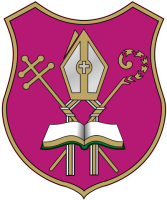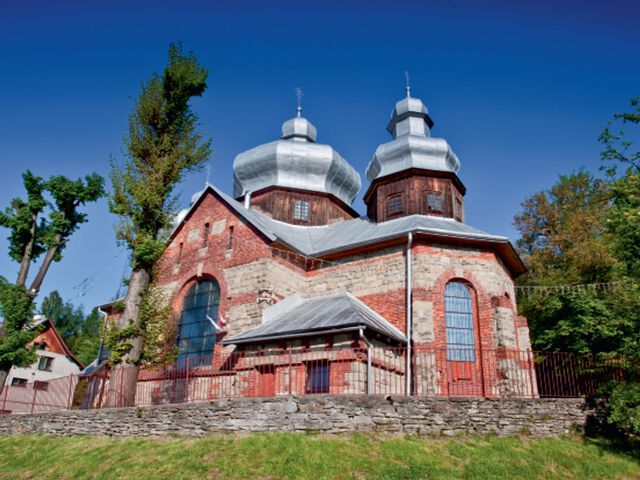



CHURCH OF St. Michael the Archangel in Żegiestów - built in the years 1917-1925 on the plan of the Greek cross, in the tradition of church construction.
The building is made of stone and brick, one-nave with two sacristy annexes. The roof is multi-hipped, covered with sheet metal, topped with three octagonal extension towers with bulbous domes. Symmetrical domes are visible above the chancel and women's gallery. The interior has a barrel vault, with eight sections in the central part. The interior, partly neo-Romanesque, comes from the period 1959-1960. Its author is J. Kania. Feretrons with the folk icons of "Annunciation" and "Crucifixion of Christ Pantocrator" from 1784, a Baroque chalice of the 18th century, a carved paschal candlestick from the turn of the 18th and 19th centuries, and a picture of "Christ in the tomb", painted on a tin, have remained from the old church furnishings.
The belfry is free-standing with three bells cast in 1956-1972. The church was renamed the Roman Catholic church of st. Anna and St. Michael in the years 1946-1947. The spring of St. Anna. According to the legend, it gushed out on the day the church was consecrated. Therefore, in the interwar period, it became a place of pilgrimage for local residents suffering especially from eye diseases
Używamy plików cookies aby zwiększyć funkcjonalnośc strony oraz zbierać statystyki odwiedzin witryny.
Zaakceptuj i kontynuuj.